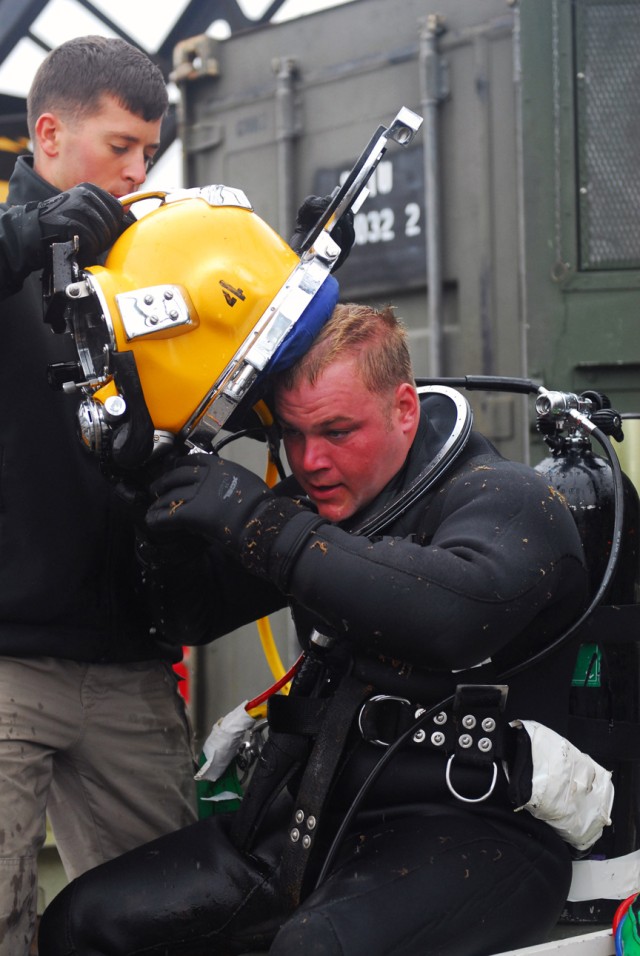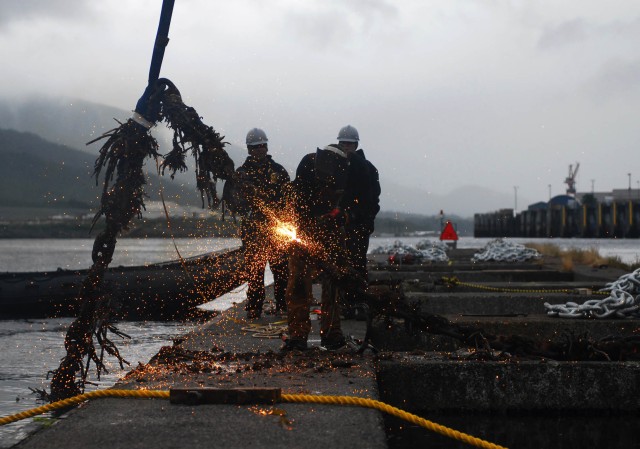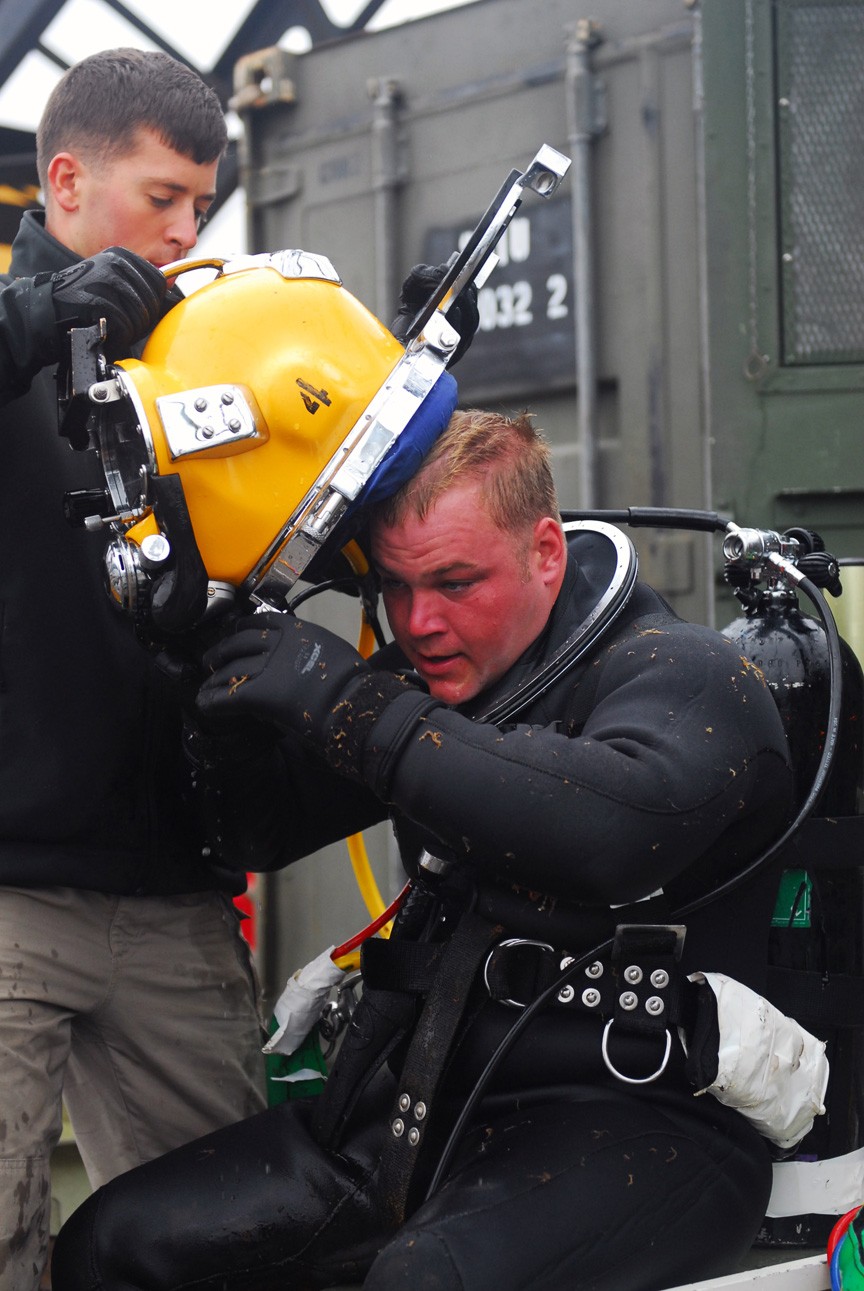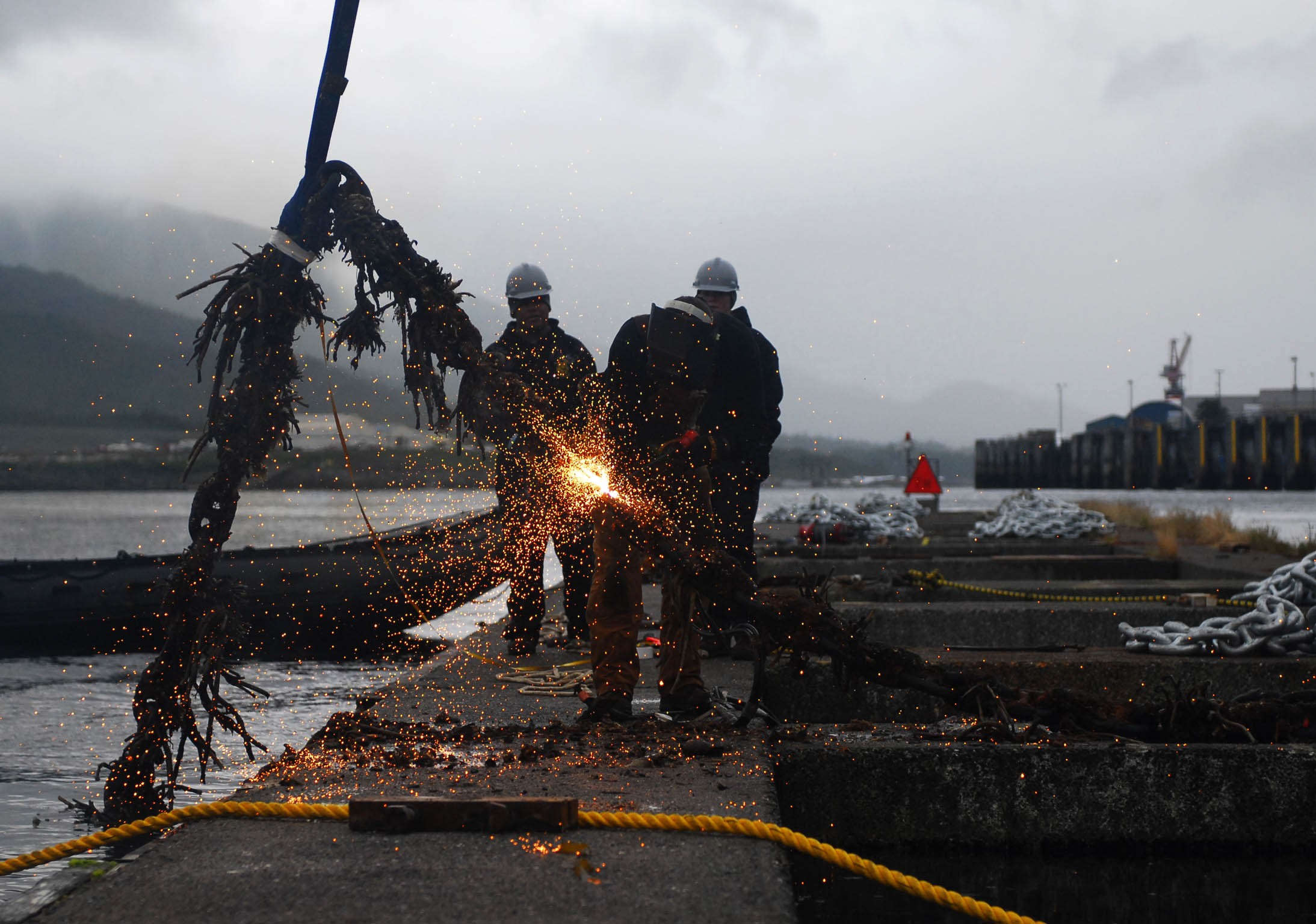KETCHIKAN, Alaska (Aug. 5, 2009) -- Seventeen members of the Army's 7th Diving Team, stationed at Fort Shafter Flats, Hawaii, traded in their board shorts and t-shirts for dry suits and sweatshirts July 14, as they began a month-long mission to repair a floating breakwater system at Bar Point Harbor in Ketchikan.
Army divers are also engineers, but their work environment is under water.
In April 1980, the Army Corps of Engineers completed construction and placement of two concrete floating breakwaters at Bar Point Harbor.
In 1996, USACE contracted with the U.S. Navy for a team of divers to mend the floating breakwater.
Now, in 2009, the 7th Diving Team is on site to perform work that includes:
- Removal of 18 wire ropes and replacing them with stronger, corrosion resistance material;
- Replace the anchor chain; removal of the fender system around the breakwater and installation of new fenders to protect it from passing boats;
- Repair cracking on the surface of the breakwater; and marine growth removal on the concrete surfaces and chain.
The task in itself may sound challenging. So what happens when day-to-day variables are added to the workload'
"Every day the weather can change at a moment's notice - the tides shift, winds pick up, temperatures drop, plus you're not sure how the chain will be lying on the sea floor," said Spc. John Hoover, 2nd class diver, 7th Diving Team. "But, that's what makes it exciting; it's always a problem-solving activity."
Every time a diver has to go in the water, the supervisor (either a staff sergeant or sergeant first class) has to get his hands on the diver to check every piece of equipment. It's also the supervisor's job to make sure everyone knows exactly what's going on at the dive site. When the supervisor shouts a command, everyone on the site, regardless of their job, has to shout it back. This lets the supervisor know that everyone understands the command and informs the team of what the diver is doing on the bottom.
Also on site is an Army master diver. This position is held by the 7th Diving Team's first sergeant.
"I have to be on site for any high-risk dives or surface decompression dive or dives deeper than 100 feet," said 1st Sgt. William Baumgartner, master diver, 7th Diving Team. "I'm there to backup supervisors and make sure all the supervisors follow safety guidelines and procedures for decompression."
The divers have four weeks to complete the project, with Aug. 14 as their scheduled completion date.
"This job not only serves the Corps of Engineers and the local community, but it provides divers with an opportunity to improve their diving skills and gain valuable experience in a cold water location," said 1st Lt. Jonpaul Navarro, executive officer.
"Diving in Alaskan water offers us a setting that is completely different to the conditions we're used to in Hawaii."






Social Sharing